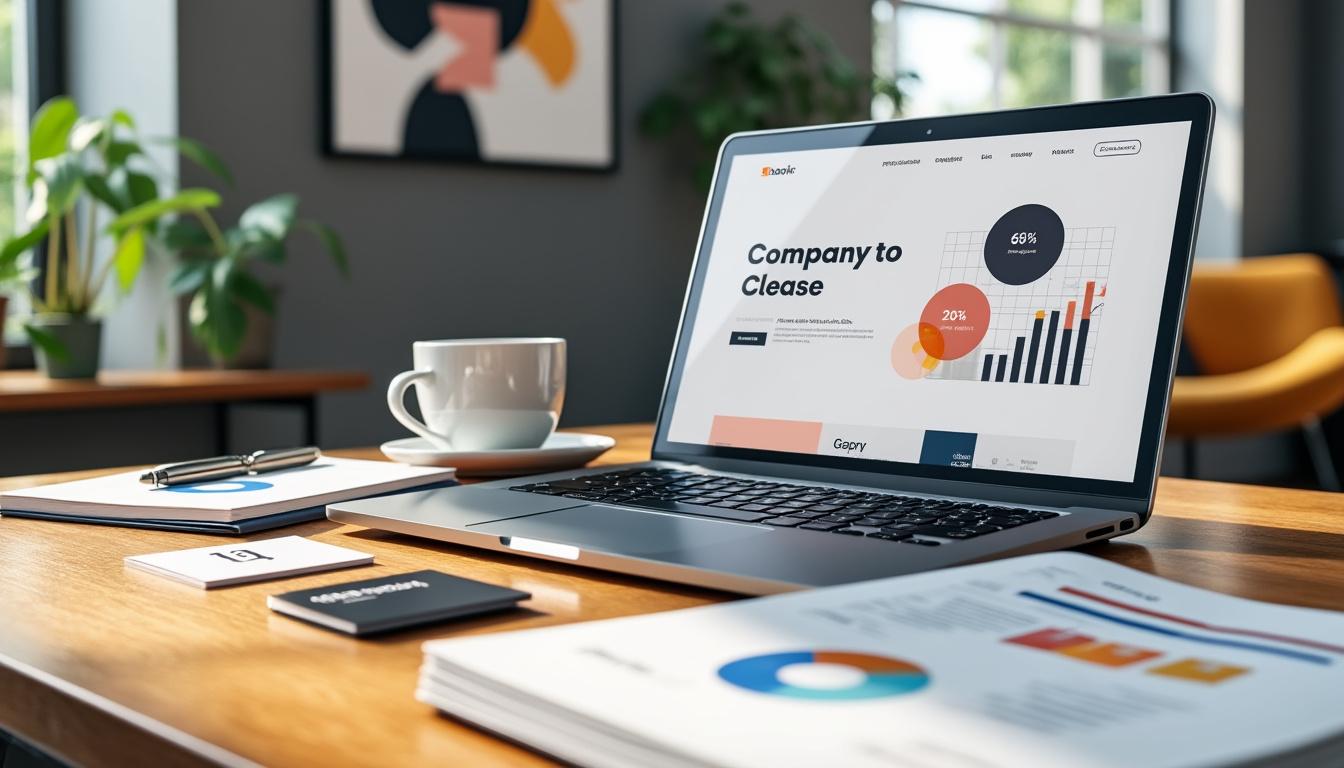The company profile is often perceived as a simple administrative document, yet it serves as a powerful tool for communication and credibility within an organization. This document synthesizes essential data that can build a strong and professional first impression among partners, clients, and market actors. More than just a collection of information, it reflects the company’s image and its seriousness. So, how can one establish an effective company profile that captures attention and instills trust?
Understanding the Strategic Role of a Company Profile
The company profile is a key document that centralizes all critical information about an organization. It encompasses essential legal and administrative elements such as the company name, SIRET number, and registered office address, but it extends far beyond these basics. It acts as a true communication vector and operational support during commercial and administrative processes.
Why is it essential?
The company profile fulfills several crucial roles:
- Prospecting Tool: It aids sales teams in presenting the company in a concrete manner, facilitating contact with prospects.
- Administrative Support: It simplifies legal processes and banking formalities by gathering all necessary elements in one place.
- Tax Document Base: It serves as a reference for creating any official document related to the company.
A well-structured profile not only enhances operational capabilities but also bolsters the company’s credibility. Prospective clients and partners appreciate having verifiable information available during their initial interactions, fostering a sense of trust from the outset.
The Benefits of a Well-Designed Profile
Creating a polished company profile yields several advantages:
- It promotes transparency and legitimacy in the market.
- It allows for quick identification by potential partners.
- It simplifies the verification of legal information necessary for administrative processes.
For example, consider a major player like BNP Paribas. Its company profile not only establishes the legitimacy of its financial activities but also includes precise data about its organization, inspiring confidence among customers and partners eager to engage.
Conversely, errors in information or negligence regarding presentation can damage the professional image of the company. Thus, it is crucial to care for and regularly update this essential document.
Essential Information to Include in a Company Profile
To craft an effective company profile, it is critical to incorporate all essential information. This ensures not only legal compliance but also presents the company in the best possible light. Here is an overview of elements to include:
| Legal Elements | Description |
|---|---|
| Company Name: | The official name of the company. |
| Legal Structure: | Indicate if the company is a SARL, SAS, or another form. |
| Capital: | Especially for corporations, it is necessary to mention the amount. |
| Registered Office Address: | A key piece of information for identification. |
| Identification Numbers: | Important numbers such as SIREN, SIRET, and APE/NAF codes. |
These elements are crucial not only for identification purposes but also for meeting legal obligations. For instance, the SIRET number is required for interactions with authorities like INSEE.
Contact Information
Contact details must also be included:
- Phone: To enable prospects to reach out easily.
- Email: Essential for professional communication.
- Website: The web address should be mentioned to redirect to detailed information.
- Social Media: Including platforms like LinkedIn can enhance the company’s digital identity.
Providing clear contact information not only facilitates communication but also demonstrates professionalism and readiness to engage.
Activity Description and Specific Features
A brief description of the company’s main activity should also appear in the profile:
- A summary of the products or services offered.
- Certifications or labels that can add value.
- Contact details for key personnel.
- A brief company history, if relevant.
The accuracy and professionalism of this profile will reflect the solidity of the enterprise. By incorporating relevant data, similar to those of major groups (e.g., Carrefour, Renault, or Air France), the effectiveness and credibility of the profile are reinforced.
Creating and Customizing a Company Profile
Establishing an effective company profile requires thoughtful approached. One must choose the right format and structure the content clearly and professionally. Here is a guide to facilitate this creation:
Steps to Follow
To ensure the quality of your company profile, it is essential to follow a few key steps:
- Gather necessary documents: This includes Kbis, statutes, and other legal documents.
- Select a format: PDF for sharing, web page for online consultation.
- Structure the content: Make the document readable and logical.
- Integrate branding: This reinforces the visual identity of your company.
- Verify accuracy: Mistakes can be costly, especially during regulatory processes.
A professionally formatted profile can significantly impact interactions with other companies. For instance, firms like Capgemini prioritize maintaining their image through meticulous documentation.
Regular Updates
Establishing a system for regular updates of your profile is crucial. Changes in legislation or company structure must be incorporated swiftly. Thus:
- Adapt the profile after each legal change.
- Conduct regular reviews of company performance.
- Maintain a versioning system to track important modifications.
Such practices ensure not only compliance but also the relevance of transmitted information.
Tools and Resources for Creating a Company Profile
Several digital tools facilitate the creation and management of a company profile. These solutions enhance organization and streamline the creation process.
Recommended Tools
Here are some relevant solutions:
- Word Processing Software: Tools like Word and Google Docs allow for flexible formatting.
- PDF Editors: Facilitate professional formatting and easy sharing with partners.
- CRM Software: For managing and updating contact-related information.
- Collaborative Platforms: Such as SharePoint, ideal for centralized management.
These tools do not only assist in creation but also ensure consistent updates, which are essential for maintaining a professional image. Companies like Orange and SNCF leverage these technologies to reinforce their communication both internally and externally.
Planning and Follow-Up
A solid follow-up, coupled with the effective use of tools, optimizes the efficiency of your profile:
- Set reminders for regular updates.
- Train sales teams on utilizing the profile.
- Create a centralized database for easy access.
Establishing clear processes allows this profile to function as a living document that adapts to the company’s evolution. It also maximizes the impact of B2B communication strategies.
Frequently Asked Questions
What are the key components of a company profile?
The key components include the company name, legal structure, capital, registered office address, identification numbers, contact information, and a brief description of the activities offered.
Why is regular updating of the company profile important?
Regular updates are vital to keep the profile compliant with legal requirements, accurately reflect the company’s current status, and maintain the credibility necessary for business interactions.
Which platforms can enhance the visibility of an online company profile?
Platforms like Google My Business, LinkedIn, and social media networks such as Hootsuite can significantly improve online visibility and connect with potential clients.
How can companies assess the effectiveness of their profiles?
Companies can assess effectiveness through client feedback, engagement metrics, and the number of inquiries received as a result of their profile.
What legal considerations should companies keep in mind when creating a profile?
Companies must ensure that all legal elements, such as registration numbers and address, are accurate, comply with industry regulations, and are kept up-to-date to avoid any compliance issues.




